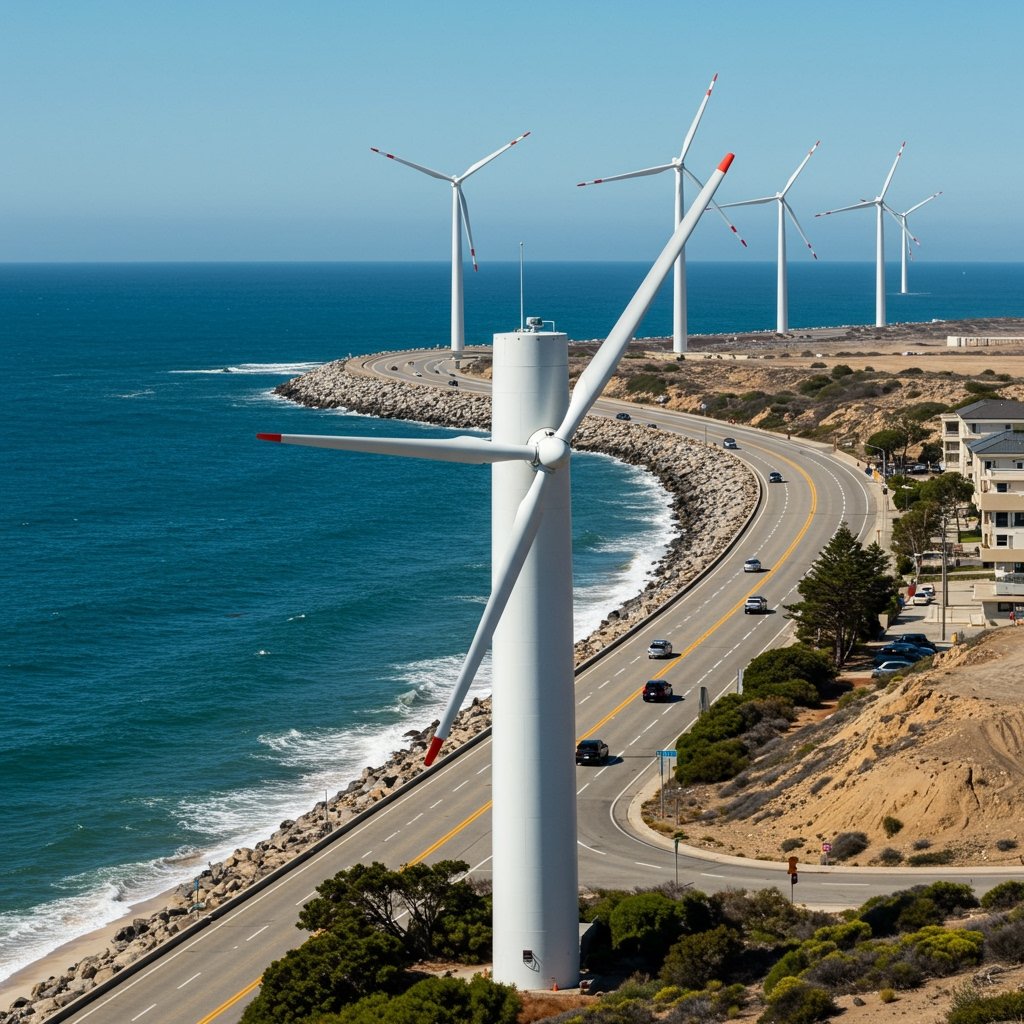California Legislates Ambitious Offshore Wind Future Amid Grid, Cost Concerns
Sacramento, CA – California’s State Assembly is currently engaged in a significant legislative debate surrounding Assembly Bill AB 2035, a landmark proposal aimed at dramatically accelerating the state’s transition to renewable energy through offshore wind development. Proposed by Assemblywoman Rep. Elena Rodriguez, the bill introduces a specific, ambitious mandate: achieving 20GW of offshore wind capacity by the year 2035. This target is designed to play a pivotal role in meeting California’s aggressive climate change goals and ensuring a reliable, decarbonized energy supply for the future.
The Bold Mandate of AB 2035
AB 2035 represents a forceful legislative push to codify and expedite California’s offshore wind aspirations. While state agencies have previously explored potential targets, this bill seeks to establish a clear, legally binding benchmark of 20GW within little more than a decade, specifically by 2035. Supporters argue this definitive target is essential to provide regulatory certainty, stimulate investment, and drive the necessary infrastructure development at a pace commensurate with the urgency of climate action. The bill outlines a framework intended to streamline permitting processes, support workforce development, and ensure equitable community benefits from large-scale offshore wind projects.
Navigating the Grid and Financial Headwinds
The path to realizing this 20GW by 2035 goal, however, is fraught with significant technical and financial challenges, as highlighted by major utility companies. Pacific Gas and Electric (PG&E) and Southern California Edison (SCE), two of the state’s largest energy providers, have voiced substantial concerns regarding the implications of such rapid and large-scale offshore wind integration. Their primary apprehensions revolve around grid integration costs and the potential for stability challenges posed by connecting massive amounts of intermittent power generation located far off the coast.
Developing the infrastructure required to transmit power from offshore wind farms to the onshore grid necessitates significant investments in undersea cables, new substations, and upgrades to the existing transmission network. Utility representatives estimate the total investment needed for this ambitious build-out, including the generation assets and associated infrastructure, could reach an estimated $50 billion. They caution that ratepayers could ultimately bear a substantial portion of these costs. Furthermore, managing the variability of wind energy and ensuring grid reliability under high-capacity offshore wind scenarios requires sophisticated technical solutions, potentially including large-scale energy storage, which adds further complexity and expense.
Environmental Advocacy Meets Local Concerns
The proposed AB 2035 has garnered broad support from environmental groups across the state. These organizations view the bill’s 20GW target as a critical step towards achieving California’s legally mandated greenhouse gas reduction goals and transitioning away from fossil fuels. They emphasize the potential of offshore wind to provide significant amounts of clean energy, particularly in a state with limited remaining onshore renewable development sites.
However, the development of large-scale offshore wind projects raises concerns among certain local stakeholders, particularly within the fishing industry. Representatives from coastal areas, including Morro Bay and Humboldt County, where potential development areas are being considered, have expressed fears about the potential impacts on marine life and their traditional livelihoods. These concerns include potential disruption to fish migration patterns, habitat alteration from turbine foundations and cable laying, and the physical exclusion of fishing vessels from traditional fishing grounds within turbine arrays. Balancing the state’s clean energy ambitions with the preservation of marine ecosystems and the economic viability of coastal communities remains a delicate challenge that the legislature must address.
Legislative Outlook and Administration Stance
The debate over AB 2035 is intensifying as the bill moves through the legislative process. It is expected to face key committee votes later this month, which will be critical in determining its fate. Lawmakers are grappling with the need to meet aggressive climate targets while also considering the economic feasibility, technical challenges, and potential local impacts raised by stakeholders.
Governor Gavin Newsom‘s administration has publicly acknowledged the importance of offshore wind to the state’s energy future. While expressing cautious optimism about the potential for achieving significant offshore wind capacity, the administration has consistently emphasized the crucial need for cost-effective solutions. This suggests that while the ambition is supported, the methods and costs associated with meeting the 20GW by 2035 target will undergo intense scrutiny before receiving full executive backing. The outcome of the upcoming committee votes will signal whether AB 2035, in its current form or an amended version, will advance towards becoming state law, shaping California’s energy landscape for decades to come.


















